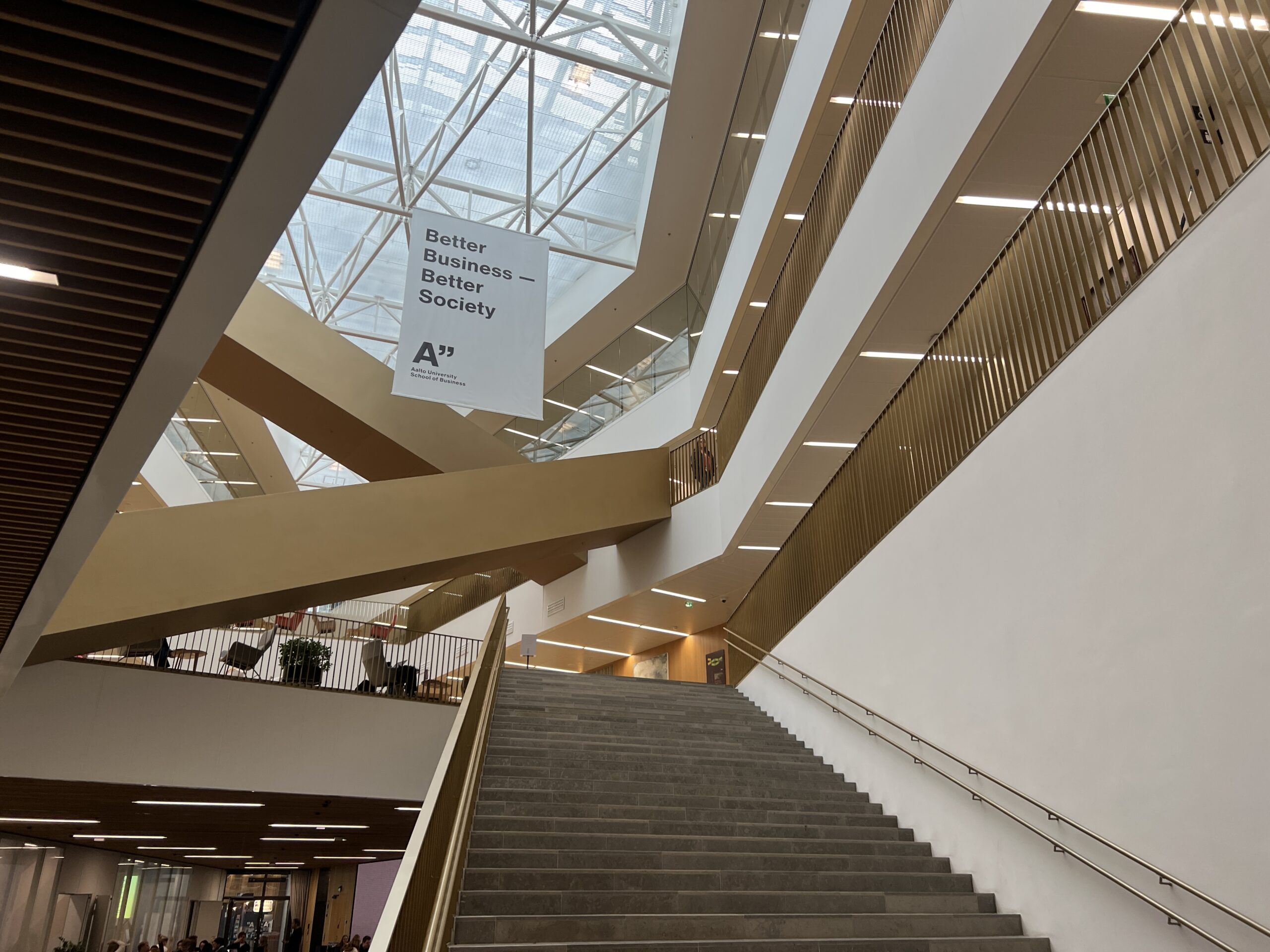
What We Learned and Did–Finnish Experience ep.1
Supported by the DCD program (디지털융합디자인 인력양성사업), four students from UNIST’s Design Department—Minju, Seoyeong, Seonkyu, and Jaehyeok—joined a global design workshop in Aalto University, Helsinki, Finland from September 21 to 29 in 2025. Hereby they share what they have experienced and learned from the training and the trip in two parts: this is the first part, and you can read the second one here.
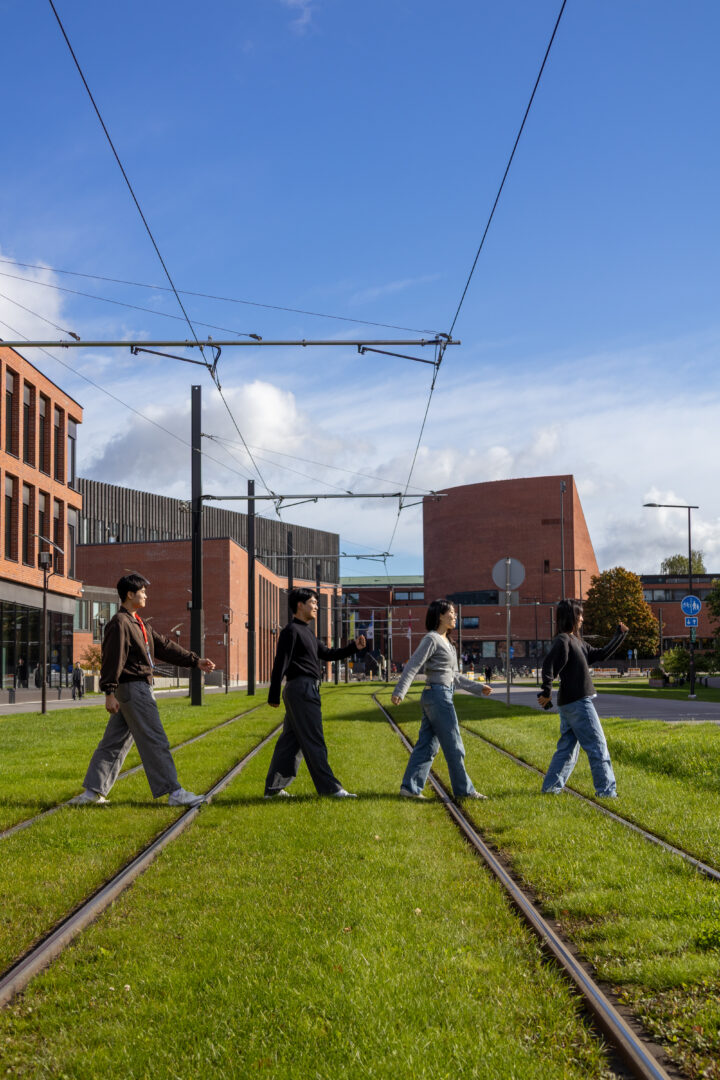
About Finland, About Aalto
Our trip was short—only nine days, six nights, but it was more than enough to actually see and feel what people mean when they call Finland “the country of design.” The whole program felt like a trip that let us rethink what design really is and what it’s supposed to do, right in the middle of the local education, spaces, and culture.
Finland has that calm northern atmosphere wrapped in nature. The population isn’t that big, around 5.6 million, but their public services, education, welfare, and design—everything—are known to be among the best in the world. And behind all of it, there was this steady kind of thoughtfulness, this practice of “design in everyday life.” Even the streetlights, the chairs at school, the trays at restaurants—every little thing had this human-centered way of thinking built into it.
At the center of all this is Aalto University. Aalto is the place where art, design, technology, and business all kind of blend together, and it’s been one of the main forces behind Finland’s design education and industry. Since the art school, engineering school, and business school were merged in 2010, the whole vibe of the campus feels pretty free—lots of collaboration, lots of trying things out just to see what happens. The school’s name comes from Alvar Aalto, Finland’s beloved designer and architect, and his idea of “human-centered functional beauty” is still woven into the campus atmosphere in this quiet, steady way.
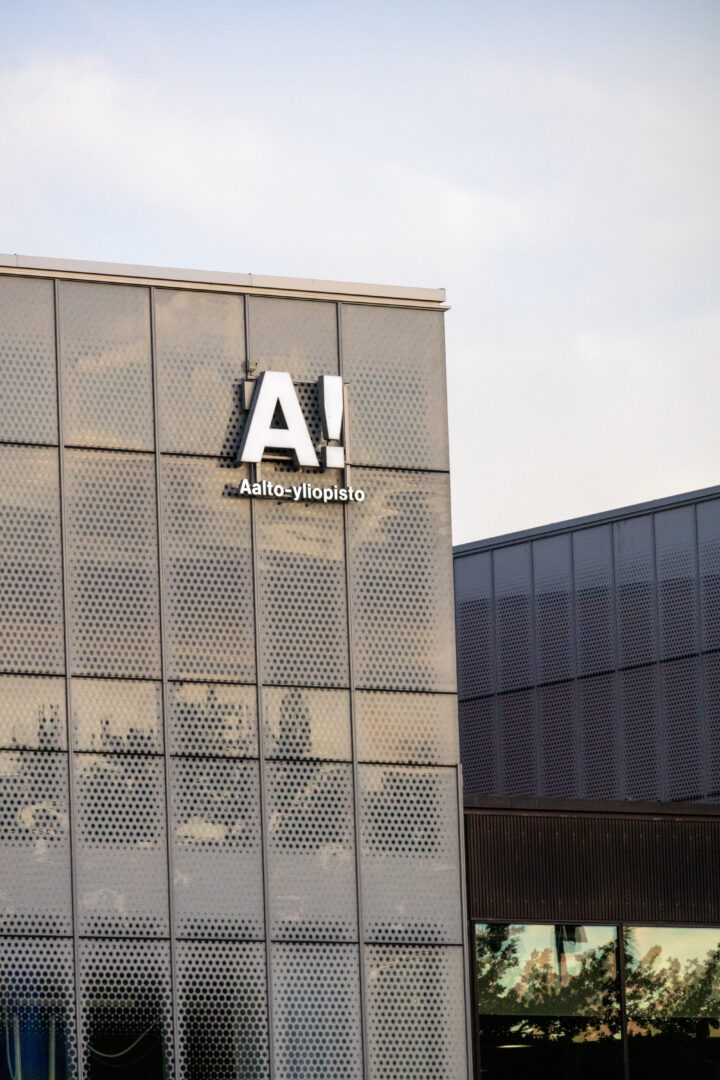
On the Aalto Campus Tour: Experiencing Design in Every Corner

On our first day at Aalto, we kicked things off with a campus tour. The reddish-brown brick buildings were stretched out low and wide, and the green paths and the tram running through them made the whole scene feel like one big piece of design.
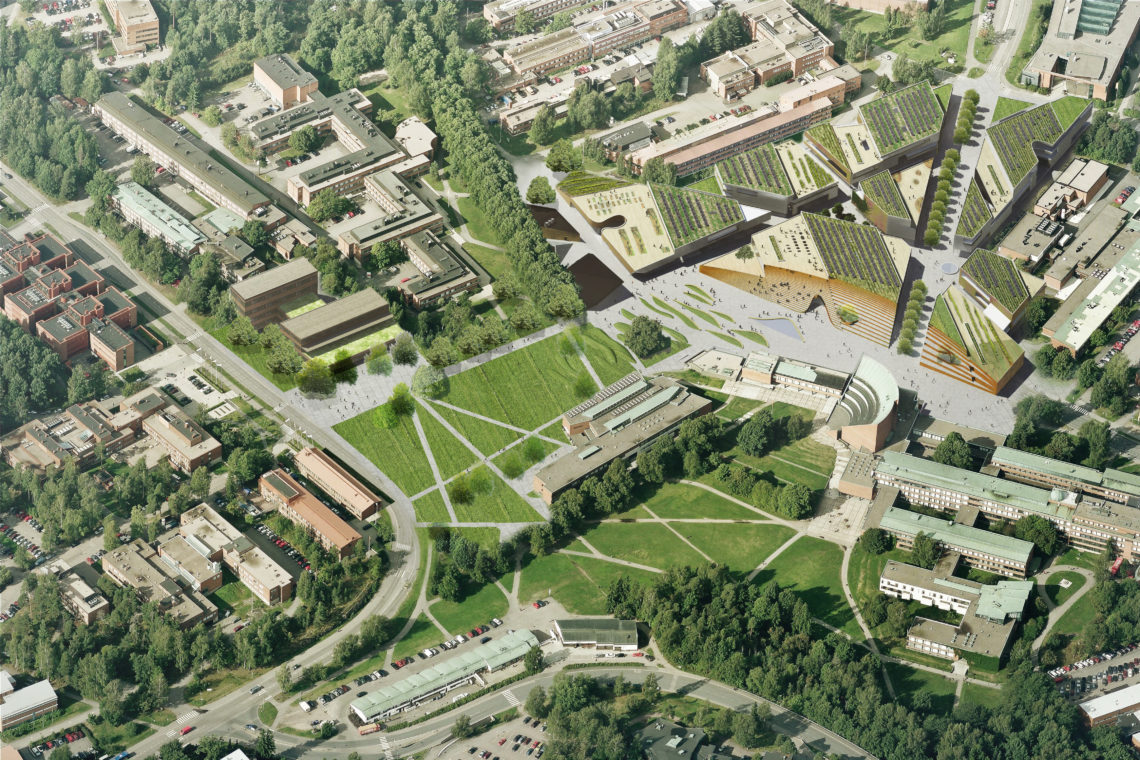
The first thing that really stuck with us was this zigzag path cutting across the lawn. It looked like just a simple walkway, but it turns out they designed it by literally tracking where people naturally walked and then shaping the path around those traces. It felt so in line with what Aalto keeps talking about—watching how people actually move and then changing the environment to match them.
Väre

Another place that stuck with us was Väre, the building for design and architecture. Its diamond-shaped patterns flowing one after another looked beautiful on their own, but the real point was how the width of the space kept shifting as you walked. It was made so you’d actually feel the space changing around you and spontaneously meet other people along the way.
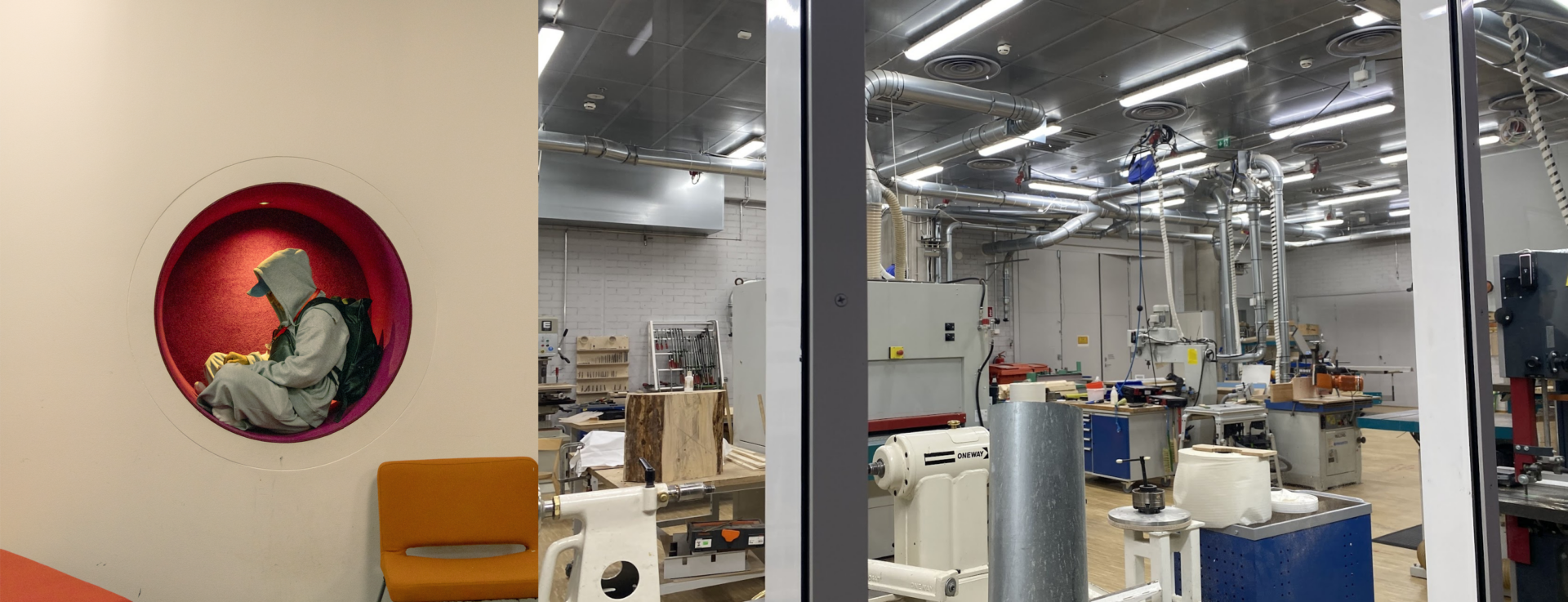
All over the campus, there were spots where you could just sit down and study or have a meeting. Students were tucked into corners everywhere—talking, resting, working. Most of the studios were covered in glass, so you could see students working from the outside. You end up casually peeking at each other’s projects, sharing ideas without even trying. That kind of “open gaze” felt really different from UNIST’s more vertical, closed-off buildings, and I could see how an open space could naturally spark creativity.
And Aalto’s system itself is run mostly by students. Even the signs around the campus—made because the buildings are kind of confusing—were created by students. Each workshop has a “workshop master,” someone who helps you get whatever materials or tools you need. There aren’t many limits on what you can buy, and once you get through the slightly annoying safety training, you can use almost any workspace, even the ones with more advanced machines. I remember thinking that an environment like this would naturally build a sense of autonomy and responsibility in students.

Inside the school, there was a shared fridge where anyone could put food in or take food out. And on the first floor of the library, there was this little area where people could drop off clothes or things they don’t use anymore and anyone else could just take what they needed.

Another thing that caught my attention was how actively they used natural light. Most of Aalto’s buildings have huge windows and this really open layout. It’s designed so people can enjoy as much sunlight as possible during the short summer, and so natural and artificial light sort of blend together. Because of that, the whole place felt warm and kind of cozy. Working in a space lit by sunlight had this strangely human, almost emotional feel to it.
And the student work displayed around the campus was memorable too. It wasn’t just simple graphic pieces—there were lots of interactive installations you could actually touch or play with. Aalto felt like a place where design is something you try out, experience, and use to stretch each other’s creativity.
Design Courses
About half of our time in Finland was filled with different design classes and workshops at Aalto. During the workshop period, we took part in sessions like “Owning Reflective Practice in the Era of Generative AI,” “UX/UI Design for Emerging Technologies,” “AI as a Co-Creator in Design,” “The Role of Biomimicry in Design and Technology,” and “Smart Cities: Designing the Future of Urban Living.” All of them circled around the future of design and technology in their own way.
Among those, there are three classes that stayed with us the most, and we want to talk about those:
Breaking News 2040

The first and last days of the workshop started with this project called “Create the front page of a future newspaper from the year 2040.” Each group imagined a social issue that might happen in 2040 and turned it into a single newspaper front page. It wasn’t about predicting the future in some accurate way, but more about learning to look at possibilities and asking, “How should designers imagine and respond to future problems?”
Each team picked different themes—technological change, environmental shifts, how human relationships might get reorganized, things like that.
Seoyeong and Minju’s team imagined a future where AI clone technology had really advanced. They didn’t just talk about how useful the tech could be; they emphasized that, in the future, we’ll need some kind of middle ground built on transparency and accountability.
Jaehyeok and Seonkyu’s team made a front page about a future where drone delivery is totally normal. Deliveries could happen in as little as ten minutes, but they also wrote about the environmental impact and the changes in traffic that might come with it. As delivery businesses grow, single-use packaging would increase too, and with new logistics systems popping up, even the sky—filled with delivery drones—could end up having its own kind of traffic jam.
As we talked through the projects and shared ideas in class, it kind of became clear that designers aren’t really trying to guess what the future will look like. They’re more like people who stay alert to what might unfold and try to shape better possibilities with a mix of responsibility and imagination.
Generative AI and Reflective Practice
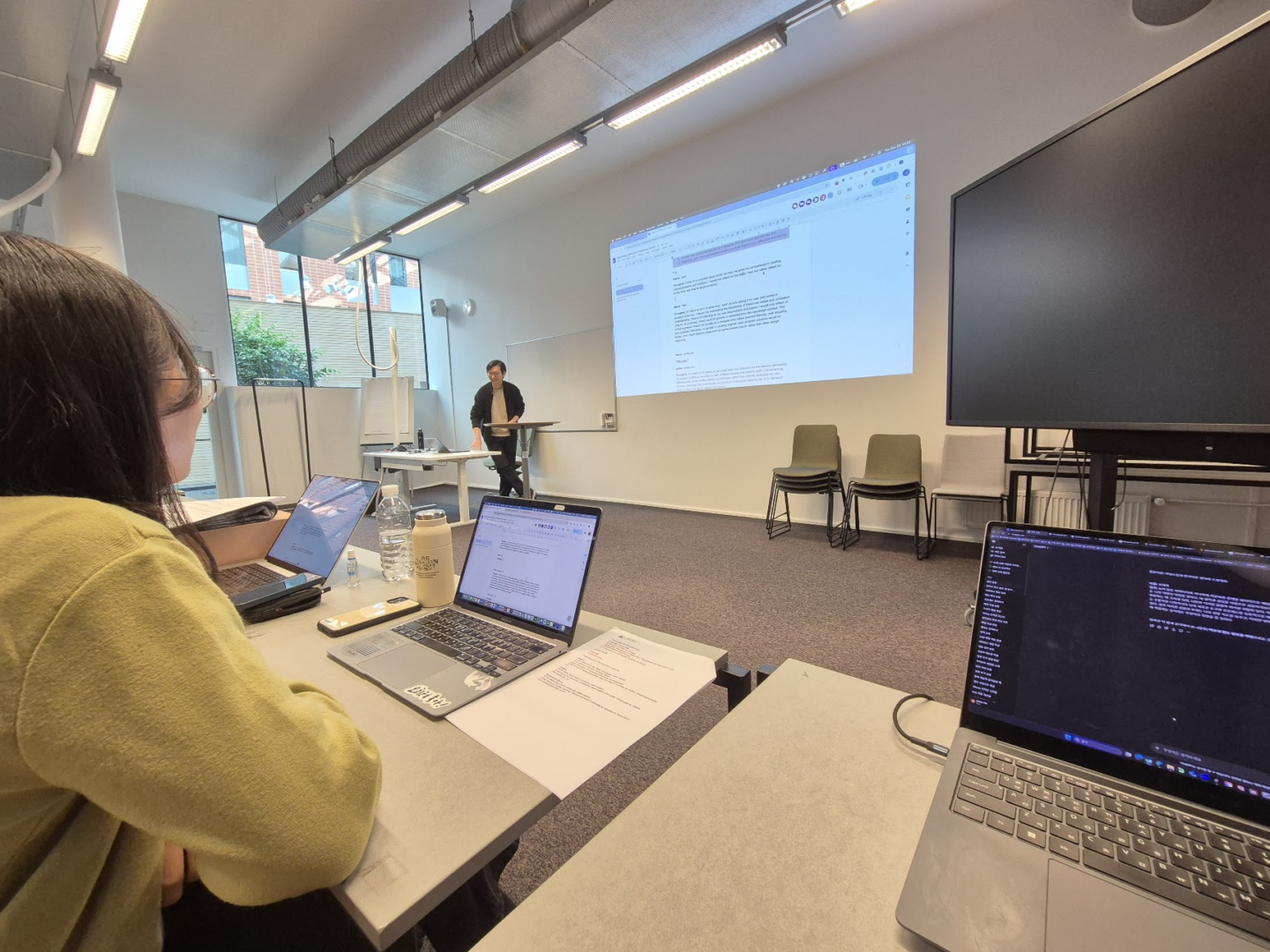
This class was led by Dr. Joongi Shin at Aalto, and it focused on treating generative AI not as some tool for speed but as a partner you can reflect with. Instead of rushing to get results out of AI, we spent time asking ourselves, “Why did I make this choice?” while working through the process.
What stuck with me was his line: “AI creates results we evaluate, but it doesn’t reflect.”
When I design something myself, I tweak it, question it, rethink it. But when AI generates something, I just go, “Yeah, that’s good” or “No, that’s not it,” and that’s the end of it. That difference hit me harder than I expected.
Through this class, we got to see that designers in the AI era aren’t just technicians who know how to use a tool. They have to protect their own way of thinking while working with the technology.
One thing that felt really different about the class was how we used a shared Google Doc the whole time. Everyone typed their thoughts in real time, and you could see ideas popping up from every corner of the room. You end up organizing your own thoughts while also learning from other people’s perspectives as they appear on the screen, which felt like a new kind of participatory learning.
The “tech tarot cards” workshop

Ethics & Responsible Innovation: Dr. Uttishta Varanasi’s class looked at design through the lens of ethics. We went through real examples of “dark patterns”—those tricks that quietly steer users into choices they didn’t actually want—and talked a lot about what kind of social responsibility designers have.
The main principles we learned came down to five: non-maleficence, accountability, transparency, fairness, and respect for human rights. In a world centered around AI and tech, it felt clear that ethical design isn’t something optional anymore.
After the lecture, our team did this “tarot card” workshop, which was honestly really fun. It used a card-game format to help us spot the dark matter inside a digital service we wanted to explore. It gave us space to look at existing designs with a more critical eye, and I liked that.
Our week at Aalto in Finland felt like learning design all over again. The open structure of the campus and the student-centered culture gave all four of us a lot to think about. Being there made us realize that design is really a way of thinking that tries to understand people and society more deeply, and connect them in better ways. And now that we’re back at UNIST, we want to hold on to that feeling and keep building on what we learned.
By now, you may think, “all work no play makes you dull master’s students.” Nope, we also had fun, too. Interested? Read our next story here!